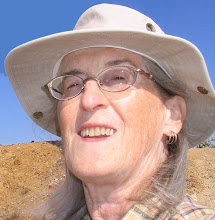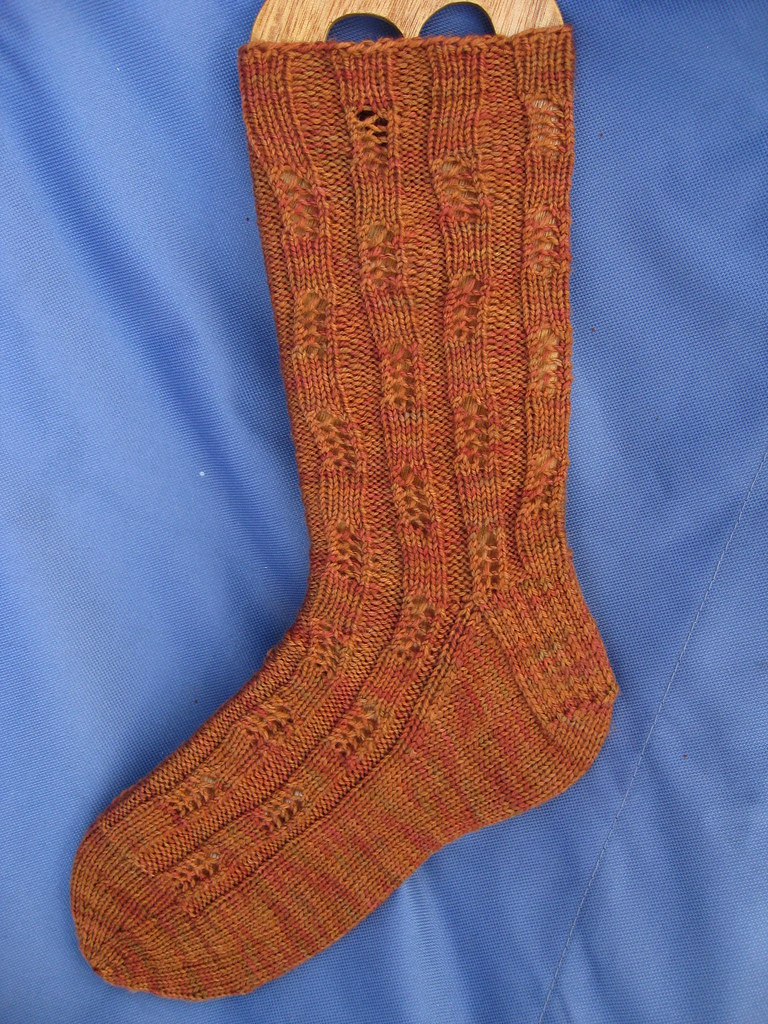Finally! I have finished spinning the second skein of Olive Tones BFL. The second skein is exactly like the first – no thinner, no thicker. This is a good thing.
The grand total for the two skeins is 500 yards of yarn and a total weight of slightly less than 4.5 ounces. How I got 4.5 ounces of yarn from 4.0 ounces of fiber will forever remain a mystery. This calculates to 1800 YPP (yards per pound), which I have learned is a commonly used measurement for handspun yarn. The numbers don't speak to me yet, not like the old, familiar WPI (Wraps Per Inch), where a '12' says "Hello, I'm worsted" and '18' screams "Sock yarn over here."
There are some other measures as well – twists per inch, I think is one. Oh, and number of plies also. Well, that's easy – this yarn has only one ply. It is a 'singles.'
I knit a swatch to see how biased the stitches would be and how the colors would turn out. 
Not bad. The stitches look okay, and the colors are lovely. I started with #2 needles then switched to #1's. Definitely nothing larger than #1 for this yarn; #0 would probably be best.
I can't help wondering how the colors would have looked if I two-plied it. Okay, just for fun here's a color swatch from Lisa Souza's web site (where I acquired the fiber). This is her Sock! in the Olive Tones colorway. Hmmm, a bluey, greeny, browny mix. Nice. 
I had intended to make socks from this yarn, but now I'm not sure. It doesn't seem strong enough. Maybe just do the leg from my handspun and the foot from commercial yarn. Oh, here's a thought. What if I buy some Sock! in Olive Tones for the foot? Of course then I'd have enough yarn for two pairs of socks. What a dreadful problem.







1 comment:
I'm very interested that there was no bias in the knitted swatch. I though singles always biased, but obviously not. I'm with you on the wpi as a good measurement for handspun. The yds/lb are only helpful when trying to figure out enough for a project!
And speaking of projects, thank you so much for explaining the 'rule of three.' That sounds like an excellent starting place for me in my calculations.
Post a Comment